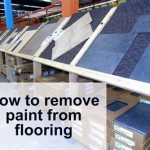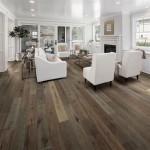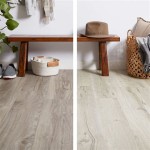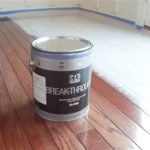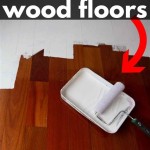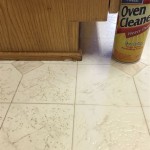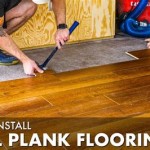```html
Expert Advice On Hardwood Flooring In USA Today 2024
Hardwood flooring remains a highly sought-after choice for homeowners across the United States. Its enduring appeal stems from its natural beauty, durability, and potential to increase a home's value. However, navigating the vast selection of hardwood options and understanding the nuances of installation and maintenance can be overwhelming. This article, drawing on expert insights relevant to the 2024 market, provides comprehensive guidance for those considering hardwood flooring.
Understanding Hardwood Types: Solid vs. Engineered
One of the initial and most crucial decisions revolves around choosing between solid and engineered hardwood. Solid hardwood consists of planks crafted from a single piece of wood. It is typically thicker than engineered hardwood and can be sanded and refinished multiple times throughout its lifespan. This characteristic makes it a long-term investment, offering resilience and adaptability to changing design preferences.
Engineered hardwood, on the other hand, comprises multiple layers of wood veneer bonded to a core, often made of plywood or high-density fiberboard (HDF). The top layer, known as the wear layer, is a thin layer of the desired hardwood species. Engineered hardwood offers several advantages, including greater dimensional stability, making it less susceptible to warping or buckling in environments with fluctuating humidity levels. This makes it a suitable option for basements or areas with high moisture content.
The choice between solid and engineered hardwood depends on several factors, including the location of the flooring, the subfloor type, and the budget. Solid hardwood generally commands a higher price point due to the material cost and more demanding installation process. Engineered hardwood offers a more cost-effective alternative, particularly in environments where solid hardwood might not be ideal.
In recent years, advancements in engineered hardwood technology have blurred the lines between the two options. Some engineered products now feature thicker wear layers, allowing for multiple refinishing cycles, effectively extending their lifespan and narrowing the performance gap with solid hardwood.
Species Selection: Aesthetics, Durability, and Sustainability
The species of wood selected significantly impacts the flooring's aesthetics, durability, and environmental footprint. Hardwood species vary considerably in color, grain pattern, and hardness, each contributing to a unique visual appeal. Hardness is typically measured using the Janka hardness scale, which quantifies the force required to embed a steel ball into the wood. A higher Janka rating indicates a harder, more durable wood, better equipped to withstand scratches, dents, and everyday wear and tear.
Popular hardwood species in the USA include oak, maple, hickory, and walnut. Oak, particularly red oak and white oak, remains a perennial favorite due to its versatility, affordability, and readily available supply. Maple offers a lighter, more contemporary look with a tighter grain pattern. Hickory is known for its exceptional hardness and durability, making it ideal for high-traffic areas. Walnut provides a rich, dark hue and distinctive grain, lending an air of sophistication to any space.
Beyond these common choices, exotic hardwood species such as Brazilian cherry (jatoba) and tigerwood offer striking visual characteristics and exceptional hardness. However, it's crucial to consider the sustainability implications of sourcing exotic hardwoods. Opting for sustainably harvested wood from responsibly managed forests is essential for minimizing environmental impact.
In 2024, there is an increased emphasis on sustainable flooring options. Look for certifications from organizations like the Forest Stewardship Council (FSC) to ensure that the wood is sourced from well-managed forests. Reclaimed wood, salvaged from old buildings or industrial sites, is another eco-conscious choice, offering a unique aesthetic and reducing the demand for newly harvested timber.
Installation Methods: Glue-Down, Nail-Down, and Floating
The method of installation is a critical factor influencing the long-term performance and stability of hardwood flooring. The most common installation methods are glue-down, nail-down (or staple-down), and floating.
The glue-down method involves adhering the hardwood planks directly to the subfloor using a specialized adhesive. This provides a solid, stable installation, minimizing movement and reducing noise. It's often preferred for solid hardwood installations, as it helps to prevent warping and cupping. However, glue-down installations require meticulous subfloor preparation to ensure a level and clean surface for proper adhesion.
The nail-down method, typically used for solid hardwood, involves fastening the planks to the subfloor using nails or staples. This method requires a wood subfloor that can securely hold the fasteners. Nail-down installations provide a robust and durable floor, but they can be more labor-intensive and may generate more noise during installation compared to other methods.
The floating method is primarily used for engineered hardwood. In this method, the planks are connected to each other using a tongue-and-groove system, creating a single, unified surface that is not directly attached to the subfloor. A thin layer of underlayment is typically installed between the flooring and the subfloor to provide cushioning, sound insulation, and moisture protection. Floating floors are relatively easy to install and can be a good option for DIY projects. However, they may feel slightly softer underfoot compared to glue-down or nail-down installations.
The selection of an installation method often depends on the type of hardwood selected, the subfloor condition, and the desired level of sound insulation and comfort. Consulting with a professional installer is recommended to determine the most suitable method for a specific project.
In 2024, advancements in click-lock systems for floating floors are simplifying installation and improving the overall stability of these floors. These improved systems provide a tighter, more secure connection between planks, reducing the possibility of gapping or movement over time.
Finishes and Maintenance: Protecting Your Investment
The finish applied to hardwood flooring plays a vital role in protecting the wood from wear and tear, moisture, and staining. Various types of finishes are available, each offering different levels of durability, sheen, and maintenance requirements. Common types of finishes include polyurethane, varnish, lacquer, and oil-based finishes.
Polyurethane finishes are the most popular choice due to their durability, water resistance, and ease of maintenance. They form a protective layer on the surface of the wood, shielding it from scratches, stains, and everyday wear. Polyurethane finishes are available in various sheens, ranging from matte to high-gloss, allowing homeowners to customize the look of their floors.
Oil-based finishes penetrate the wood, enhancing its natural grain and color. They provide a warm, natural look and are relatively easy to repair. However, oil-based finishes are generally less durable than polyurethane and require more frequent maintenance.
Proper maintenance is crucial for preserving the beauty and longevity of hardwood flooring. Regular sweeping or vacuuming is essential to remove dirt and debris that can scratch the finish. Damp mopping with a pH-neutral cleaner specifically designed for hardwood floors is recommended for occasional cleaning. Avoid using excessive water, as it can damage the wood.
Protecting hardwood floors from scratches and dents is also important. Use furniture pads under the legs of chairs and tables to prevent scratches. Avoid wearing shoes with high heels or cleats on hardwood floors. Place mats or rugs in high-traffic areas to reduce wear and tear.
In 2024, there is a growing interest in eco-friendly finishes that are low in volatile organic compounds (VOCs). These finishes offer a healthier alternative to traditional finishes, reducing indoor air pollution. Look for finishes that are certified by organizations like GreenGuard to ensure they meet stringent environmental standards.
Refinishing hardwood floors is a process of sanding down the existing finish and applying a new coat of finish. This can restore the beauty of worn or damaged floors and extend their lifespan. The frequency of refinishing depends on the type of finish, the amount of traffic, and the maintenance practices. Solid hardwood floors can typically be refinished multiple times, while engineered hardwood floors may have limited refinishing potential depending on the thickness of the wear layer.
Budgeting and Professional Installation
Hardwood flooring represents a significant investment, and it's essential to develop a realistic budget that encompasses both materials and installation costs. The cost of hardwood flooring varies depending on the species, grade, and finish. Installation costs can vary depending on the complexity of the project and the installer's rates. Obtain quotes from multiple contractors to compare prices and services.
While DIY installation can save money, it's generally recommended to hire a professional installer, particularly for solid hardwood and glue-down installations. Professional installers have the expertise and equipment to ensure a proper and durable installation, minimizing the risk of problems such as warping, cupping, or gapping.
Choosing hardwood flooring is a decision that requires careful consideration of various factors, including hardwood type, species, installation method, finish, and budget. By understanding these considerations and seeking expert advice, homeowners can select hardwood flooring that enhances the beauty, value, and comfort of their homes.
Ultimately, successful hardwood flooring projects in 2024 hinge on informed decision-making at every stage, from material selection to professional (or skilled DIY) installation to diligent ongoing maintenance. With proper care and attention, hardwood floors can provide lasting beauty and functionality for generations to come.
```%202.jpg?strip=all)
Light Vs Dark Hardwood Flooring America

11 Types Of Flooring That Will Upgrade Your Home Instantly Colibri Real Estate

How Much Does Hardwood Flooring Installation Cost 2025 Data Angi

11 Types Of Flooring That Will Upgrade Your Home Instantly Colibri Real Estate

Light Vs Dark Hardwood Flooring America
%203.jpg?strip=all)
Light Vs Dark Hardwood Flooring America

Nwfa National Wood Flooring Association

How Long Does It Take To Refinish Hardwood Floors Refinishing Guide Reallyfloors America S Est Flooring
%202.jpg?strip=all)
Light Vs Dark Hardwood Flooring America

How To Make Wood Floors Less Slippery Coit
See Also

